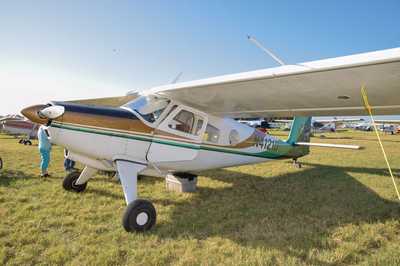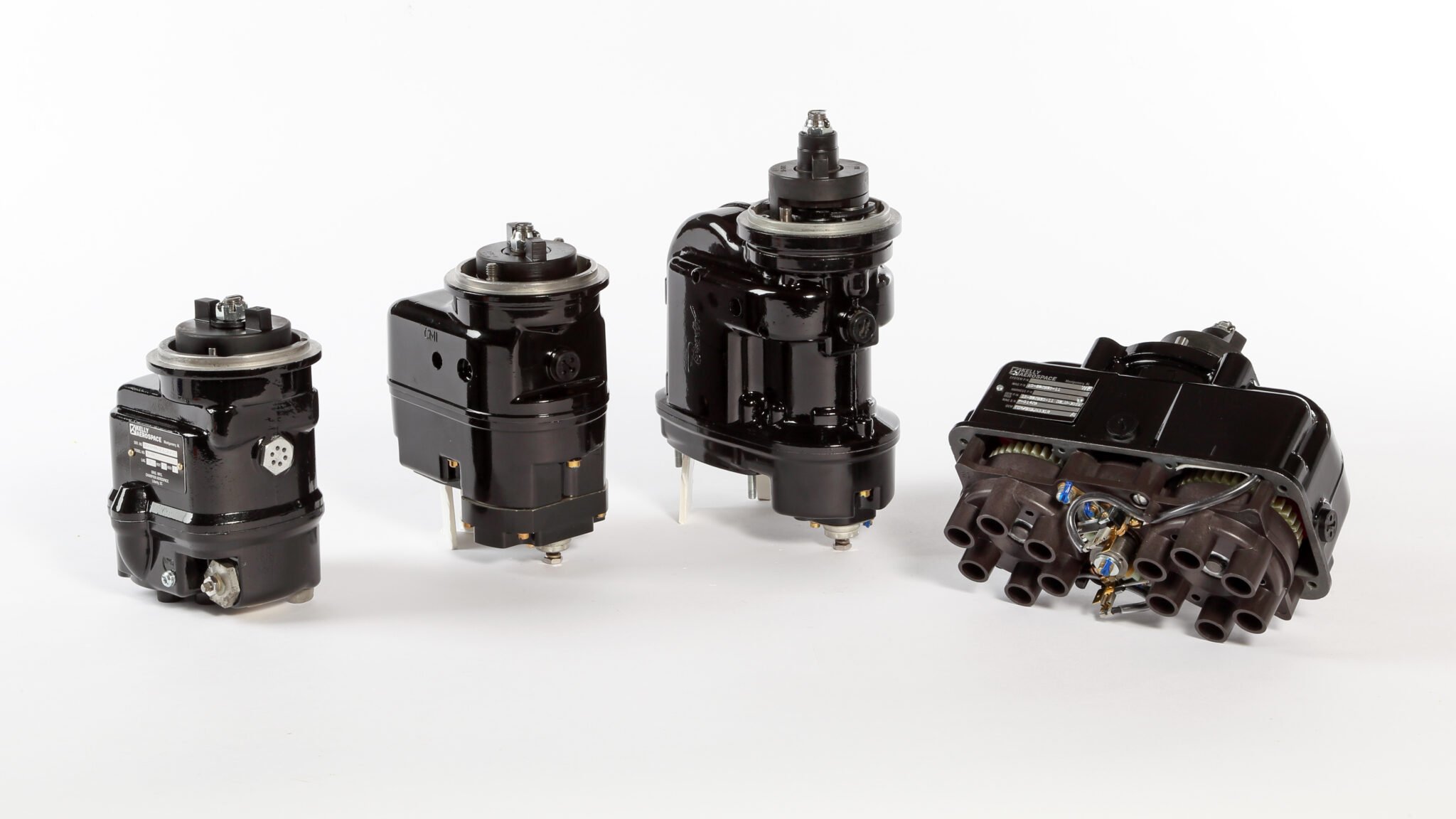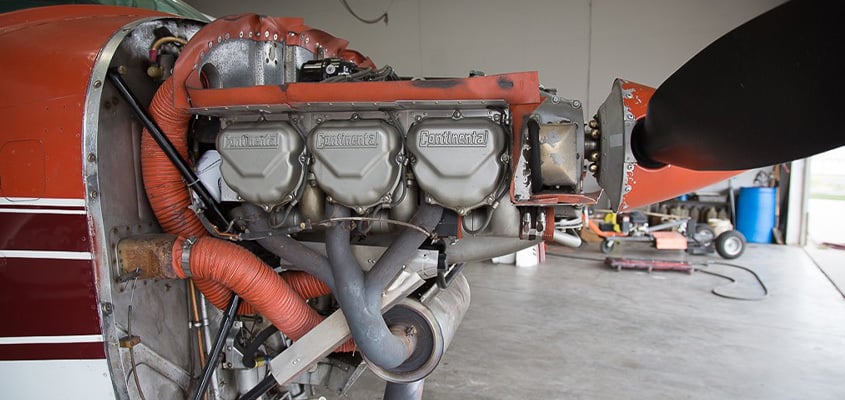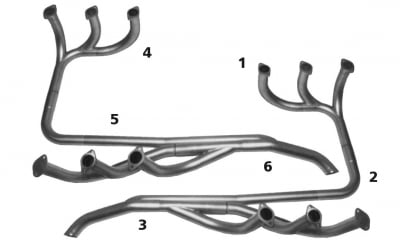Aircraft Welding Diaries: History of Helio
The remaining airworthy Helio aircraft in operation today are as popular as ever. Knisley Welding caters to the aircraft exhaust system for some of these iconic planes. Let’s explore the history of Helio, its contributions to the aircraft industry, and how it is doing now. Helio airplanes have an excellent track record of reliability and performance, having seen action in some of the harshest environments all around the world. These aircraft are recognized for their exceptional durability, reliability, and short takeoff and landing (STOL), allowing them to use runways much shorter than conventional planes.

A Helio Courier in Edmonton, Canada circa 1959. Photo taken by Gordon Hunter.
The Foundation of Helio Aircraft
Otto Koppen and Lynn Bollinger founded the Koppen-Bollinger Aircraft Corporation in Massachusetts in 1948 with the aim of developing a light STOL utility aircraft. Initially stationed at Boston Metropolitan Airport in Canton, Massachusetts, the company was later renamed the Helio Aircraft Corporation. The production of the Helio Courier began in the early 1950s at a factory in Pittsburg, Kansas.
The Fight Over the Helio Courier
General Aircraft Corporation bought Helio Aircraft in 1969 and continued production until 1974, the year that General Aircraft sued the Central Intelligence Agency (CIA), alleging that it planned to put down the business by the unlicensed production of the Helio Courier. In the 70s, the rights to produce the Helio Courier were passed from company to company. However, despite its popularity as a steady workhorse, Helio ceased production of the Courier and Stallion aircraft in 1974. Helio Aircraft Ltd then bought production rights to the Helio Courier, but throughout the 1980s, only 18 aircraft were built. After this, the Courier and the Helio Stallion’s production rights were passed on repeatedly.
Helio Today – A Promising Future
After a series of buyouts, Helio Aircraft LLC purchased production rights and, in 2004, announced the return of the production of both the Helio Stallion and the Helio Courier. Helio Aircraft LLC promises the buyers of new Couriers and Stallions to feel the same versatility and performance that these two aircraft were immensely popular for. Drawing from a pool of proven techniques and skills from the aviation industry and others, Helio Aircraft LLC today consists of a team of seasoned experts working together since the late 1990s to pave the way for the return of the latest generation of Helio aircraft.

The remaining Helio Couriers in excellent working condition today are quite few and far between. Photo from General Aviation News.
The Two Most Popular Helio Aircraft
The Helio brand is most associated with two aircraft: the Helio Courier, a high-wing C/STOL light utility aircraft, and the Helio Stallion, a military gunship that saw action during the Vietnam War.
The Helio Courier
Introduced in 1954 by the Helio Aircraft Company, the Helio Courier is a light STOL aircraft with a cantilever high-wing and a Lycoming GO-480 engine with 295 hp. While only around 500 Helio Couriers were produced in its 20-year production history, these aircraft were well renowned for their fast takeoffs and ability to climb at high angles. One drawback to the design, though, was that the engine often required maintenance on a constant basis. In the 1980s, Helio Aircraft Ltd. attempted to solve this engine problem by manufacturing new aircraft and replacing geared engines with direct-drive Lycoming engines. And while there were two new models produced out of this effort, the H-800 and the H-700, only a total of 18 were produced. Nevertheless, the Courier has excellent slow flight capability, with a minimum control speed of about 28mph, making it perfect for confined off-airport operations. A solidly reliable light utility aircraft, the Courier has a 39-foot wingspan, a loaded weight of about 3,600 pounds, and a range of about 950 miles carrying five people. An improved, more powerful version of the Courier was used by the US Air Force from 1958 onwards.

The U-10 Super Courier.
Military Applications
Known as the U-10 Super Courier, this variant saw action in the Vietnam War and was used extensively by the US Army Special Forces and the CIA for supply drops, liaison work, insertion/extraction operations, reconnaissance, and forward air control.
Bush Pilots Choice
Because of its superior STOL capabilities, Helio Couriers remain popular among bush pilots in Canada, where they operate in rough terrain where there are usually no prepared landing strips or runways.
Specialized Variants for Law Enforcement and Media
Couriers in the service of the Sheriff’s departments of Gaithersburg, Maryland, and Pima County, Arizona, are of the rare tri-gear model, with gyro-stabilized cameras under the wing for aerial observation. Meanwhile, other couriers, such as Winged Vision, Inc., use high-definition slow-flying television camera platforms with gyro-stabilized cameras under the wing for aerial observation to cover major sports events.
The Helio Stallion
The Helio Stallion was first developed in 1964 as a turboprop-powered variant of the Courier. Eventually, it ended up not just having a completely different design, but it was also much larger and more costly to produce.

The Helio AU 24A Stallion.
Military Transformation
The United States Air Force (USAF), however, turned out to be interested in the design and commissioned a gunship version with an M197 three-barrel 20x120mm rotary cannon mounted in the left cargo door. Now designated as the AU-24A gunship, the Stallion also had five additional hardpoints for extra fuel or additional ordnance. Eighteen (18) of these AU-24As were purchased by the USAF and later delivered fourteen (14) to Cambodia’s Khmer Air Force for border surveillance and counter-infiltration purposes.
Contemporary Utility and Performance
Helio’s next-generation Stallion is currently marketed as a bush plane and utility aircraft. It is designed to be fully maneuverable and controllable at 37 knots and has a cruise speed of 175 knots. Designed for takeoff and landing distances under 350 feet while carrying 1,700 pounds of payload, the new Helio Stallion has an estimated range of over 1,000 nautical miles with standard fuel capacity.
Awaiting The Return of Helio
We’ve been anticipating the return of Helio since 2019. In an announcement back then, both the Courier and the Stallion will continue to draw on the trademark strengths that have made them so popular after all these years. New improvements will also be built into the newer models, making them even more competitive in the global light utility aircraft market. Incredibly versatile, the new Helio aircraft is envisioned to fulfill a variety of roles, including law enforcement and military, bush and float operations, security, transport and logistics, aerial photography and surveying, and recreation. The new Helio Couriers and Stallions have several hardpoints available and can be outfitted in various landing gear configurations, including tricycle landing gear, conventional landing gear, straight floats, amphibious floats, or skis.
Helio Aircraft: A Legacy of Reliability and Performance
Fast forward to today in 2023 (2021 in the original blog), we haven’t heard from the Helio company in quite a while. Their official website has a “Coming Soon” message out front, and we have yet to hear or read about new updates on the production of new aircraft or anything about the company at all. Nevertheless, we eagerly await the day the Courier and the Stallion rule the skies again!

A Helio H-295 Courier flying in the United Kingdom in 2016. Photo by Alan Wilson.
For more information regarding Helio aircraft, or if you are in need of aircraft exhaust systems, parts, or repairs for a Helio aircraft, please contact Knisley Welding. We are happy to provide you with the necessary assistance. Sources


